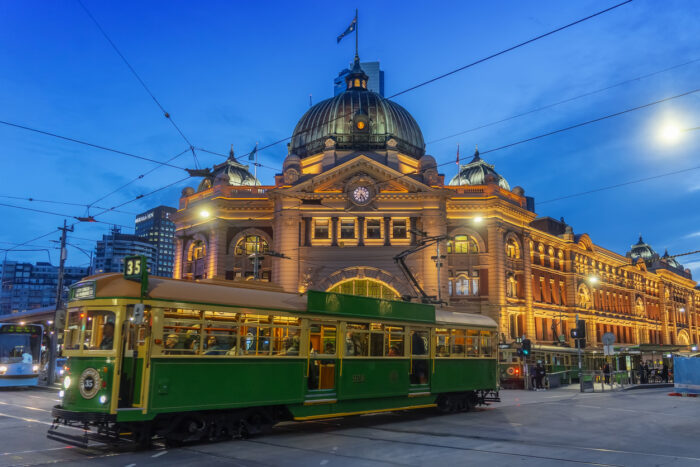Insights
Brisbane vs Melbourne: Which city offers better property investment opportunities?
Published
10 September, 2024

Which capital city is best for your property investment capital: Brisbane or Melbourne? In the first of our State vs State series, we pit the two east coast cities against one another to highlight their differences, their challenges and their benefits as investment destinations.
Jump to:
- Brisbane pros for property investors
- Brisbane investment challenges
- Melbourne investment benefits
- Melbourne property investment challenges
- Brisbane vs Melbourne (the numbers)
Over 70 per cent of investors prefer investing in an Australian capital city (rather than towns and regional areas). And given the many pros and cons each cap city offers, investors are turning interstate to find a suitable opportunity to fit their investment criteria.
Despite the long drive between them, Brisbane and Melbourne each offer solid fundamentals for investing and plenty of unique opportunities for investors. But they also come with their own set of pitfalls. So today, Brisbane and Melbourne face off as property investment destinations.
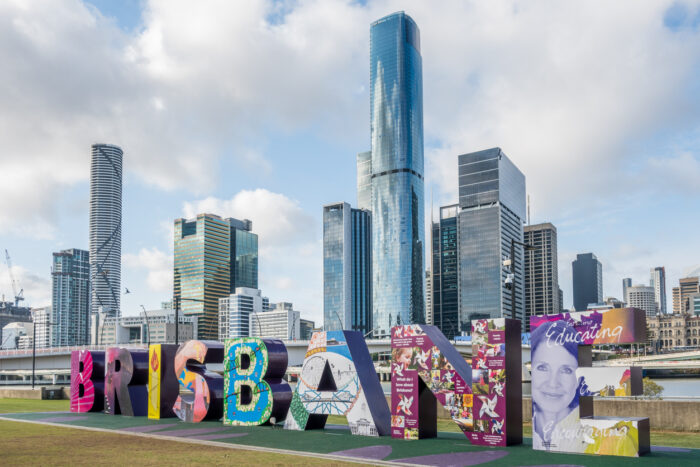
Brisbane vs Melbourne: Which capital city is better for property investment?
Brisbane as a property investment: Accessibility, infrastructure and the Olympics
What makes QLD’s capital worth investing:
1. Affordable entry point
You guessed it, Brisbane is far more wallet-friendly than Melbourne, offering you a lower entry point to invest in high-quality property.
Going off September 2024 data, the median house price in Brisbane hovers around $760,000, and with the national median property price sitting at $959,300, there’s a significant discount available here compared to most other precincts nationwide.
2. Growing infrastructure
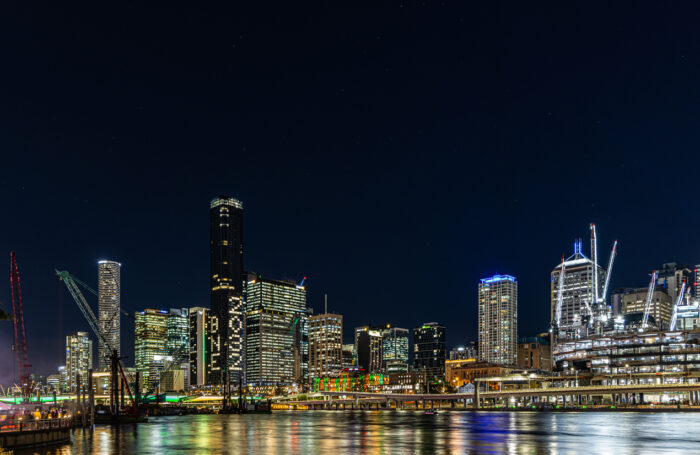
The Games are coming to town. Ahead of hosting the 2032 Olympics, Brisbane is experiencing (and has already seen) a huge boom in infrastructure developments. Projects like the Cross River Rail and Brisbane Metro upgrades are expected to improve public transport and connectivity, pushing certain suburbs into premium investment categories.
Those neighbouring postcodes will ride on the coattails of such precincts benefitting from a makeover, and as we saw in the years leading up to the 2000 Olympics in Sydney, the overall city median is likely set for a solid hike before the opening ceremony on the 23rd July, 2032.
3. Lifestyle, climate and new arrivals
Brisbane’s warmer, more predictable weather, its outdoor-focused lifestyle and its far more laid-back atmosphere has given the Aussies and expats plenty of reason to make the city their home.
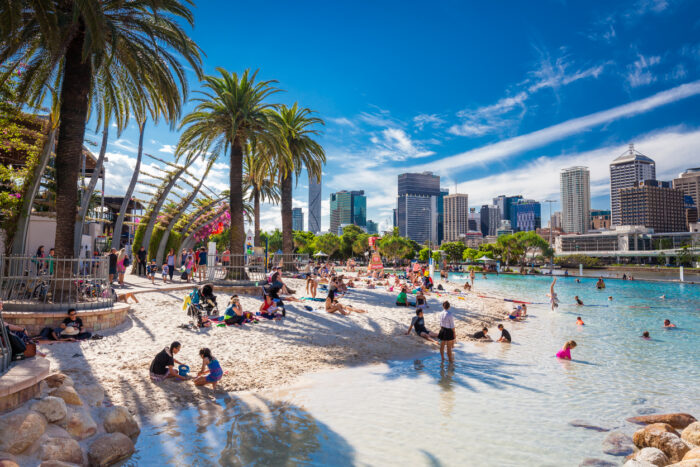
A fast-growing population and skyrocketing demand for lifestyle properties make it an attractive market for investors focusing on long-term capital growth. All you have to do is look at its southern neighbour cities to see why a less competitive, yet still incredibly relevant, Brisbane would be a brilliant home.
Not just for new arrivals, but for investment capital, too.
4. Rental yields
Rental yields in Brisbane are outperforming Melbourne’s, with Brisbane residential stock boasting an average gross rental yield of 4.2 per cent, compared to Melbourne’s 3.6 per cent. While both yields are beyond satisfactory in the eyes of a typical residential property investor, the disparity could be a good consideration for income-hungry Australians.
Why investors might be hesitant about Brisbane:
1. History of slower capital growth
Looking back in time, the Brisbane Market’s capital appreciation has been historically slower than Melbourne. If you were to avoid the forecasts and simply go off precedent, then investors looking for rapid property value spikes might be more comfortable investing in Melbourne’s property scene.
But we’ve also seen the promise that Brisbane has, with evidence of increased population year-on-year and guaranteed incoming infrastructure thanks to the 2032 Olympics. Investors should be careful when looking only at past results to determine future performance (as they should with any and every investment).
2. Fewer employment opportunities
As a smaller city, Brisbane has fewer employment opportunities compared to Melbourne, particularly in industries like finance, tech and creative services. While not guaranteed, the smaller employment hub might affect long-term demand for rental properties in comparison to Melbourne, particularly in premium segments of the market that benefit more from spikes in capital growth.
Melbourne: Australia’s cultural hub
Why invest in Melbourne property:
1. Consistent capital growth
As one of Australia’s most relevant cities, Melbourne has a strong history of capital growth, especially in its established suburbs. The city’s larger population and magnet for international arrivals has helped maintain solid property prices for decades. Even despite its pricier property market, this isn’t expected to slow.
Today, Melbourne’s median sits at around $920,000. As of this writing, it’s coming off the boil, compared to Brisbane, and Melbourne’s long track record of consistent price appreciation would give any investor confidence of what lies ahead. Prices are becoming too much for many buyers. But sometime after the same barrier hits Brisbane, Melbourne’s relevance will likely return along with its forecasted median price growth.
2. Vibrant lifestyle
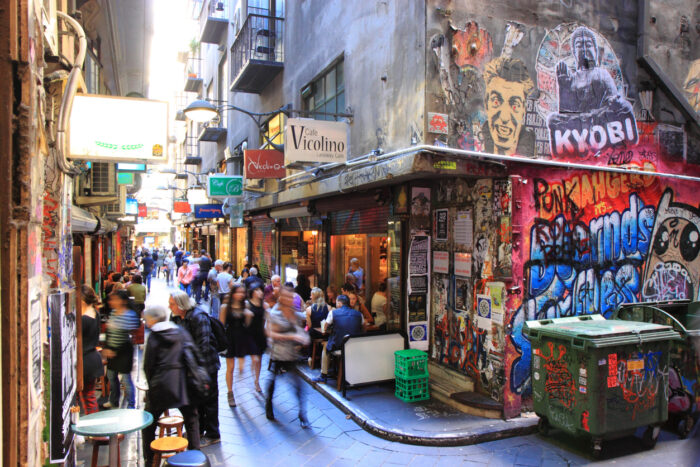
You can’t think of Melbourne without seeing the flashing lights of its vibrant city culture.
Its rich cultural life, huge selection of restaurants, cafes, galleries and sporting events all make Melbourne an exciting place to live. So, no surprise, it can have a far bigger pull for residents who love a bit of atmosphere in their home city. Brisbane might have the Olympics, but it’s very hard to say if it’ll ever compare to Melbourne’s vibrant lifestyle.
3. Strong employment hub
Melbourne is Australia’s second-largest employment hub, with job opportunities galore across a tonne of industries. This translates into high demand for inner-city and suburban properties, particularly for young professionals and families.
It also reels in international workers, with so many global companies headquartered in Melbourne and so many opportunities for foreign workers to catapult their professional careers. If you’re not in Melbourne for the nightlife, sport or culture, you probably are for its excellent employment opportunities.
4. Population growth
Melbourne’s population is growing at over twice the rate of Brisbane’s, with the city on track to surpass Sydney as Australia’s largest city by 2030. In 2022-23, Melbourne added 167,500 to its headcount, while Brisbane added a little over 80,000 people.
What good is population growth for property investors? It boosts long-term demand for housing, ensuring a relevant investment for years to come and benefits investors who hold property in key areas.
Why investors are wary of investing in Melbourne:
1. High entry cost
It’s not all checked boxes for Melbourne, with property prices seriously higher in Victoria’s capital than in Queensland’s.
Larger price tags for Melbourne property creates a barrier for investors, not only minimising the opportunities for the average investor but also making the argument harder for short-term capital growth.
2. Lower rental yields
As we’ve seen, Melbourne’s rental yields tend to be lower than Brisbane’s. For investors considering buying an apartment, this is particularly relevant in the inner-city market, which has been oversupplied for years.
Looking for strong cash flow? You might consider other precincts—or even other investments than residential property, like commercial real estate. Here’s what a good return on commercial property investment looks like.
3. Cost of living
As you’d expect, Melbourne’s cost of living is one of the highest in Australia. As of 2024, the overall cost of living—from a litre of milk to a short train ride—is notably higher than in Brisbane, which can affect both rental affordability and purchasing power for buyers. But just as important, a higher cost of living in Melbourne redirects new arrivals to its cheaper, more affordable counterparts (like Brisbane and even all the way in the west, Perth).
Cost of living comparison: Brisbane vs Melbourne
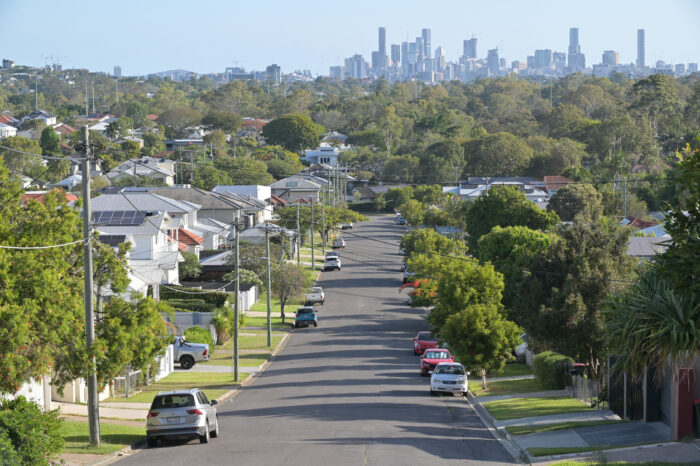
Cost of living ranks as one of the highest factors when considering relocation. So, with the help of numbeo.com, let’s break down what both Brisbane and Melbourne have going for themselves on a cost-conscious front:
- Groceries: On average, groceries are 10 per cent cheaper in Brisbane.
- Rent: Not just house prices are higher in Melbourne, but rent, too. The average rental for a 2-bedroom unit in Brisbane is about $550 per week, whereas a similar listing in Melbourne will fetch $650 per week.
- Utilities: Brisbane offers more affordable utilities (such as power, gas and water), with prices around 5 per cent lower than in Melbourne.
- Transport: Public transport is more expensive in Melbourne, but the city offers better connectivity, especially in outer suburbs. For many, time is money, so the extra price for better transport might be cash well spent.
The final word: Brisbane or Melbourne as a property investment destination?
Brisbane: Better suited for investors seeking lower entry points, higher rental yields and long-term capital growth driven by a solid pipeline of infrastructure projects.
Melbourne: Better suited for investors able to pay a premium for property in exchange for consistent capital growth, huge cultural appeal and a strong employment market (all factors leading to a bustling city).

Comparing the numbers: Brisbane vs Melbourne
| Category | Brisbane | Melbourne |
| Median house price (2024) | $760,000 | $920,000 |
| Median unit price (2024) | Lower than Melbourne | Higher than Brisbane |
| Rental yield (2024) | 4.2% | 3.6% |
| Cost of living | Cheaper overall (groceries, rent, utilities) | Higher overall, particularly rent and groceries |
| Average rent (2-bed unit) | $550 per week | $650 per week |
| Public transport cost | Cheaper | Higher, but better connectivity |
| Utilities cost | ~5% lower than Melbourne | Higher than Brisbane |
| Employment opportunities | Fewer, concentrated in certain industries | Broader, with strong finance, tech, education sectors |
| Capital growth | Historically slower but expected to improve in the run to 2032 | Consistently strong, particularly in established areas |
| Infrastructure growth | Significant developments (Olympics 2032, Cross River) | Well-developed, limited new large-scale projects |
| Lifestyle | Warmer climate, laid-back, outdoor-focused | Vibrant cultural scene, cooler climate, bustling city |
| Population growth | Slower, but increasing steadily | Fastest-growing city, expected to be Australia’s largest by 2030 |
| Long-term investment outlook | Positive due to upcoming infrastructure and affordability | Positive due to consistent capital growth and strong economy |
Of course, your decision on which city’s property market to invest in—if you’ve narrowed them down to these great options—will depend on your own budget, your risk appetite, your financial goals (i.e. are you income or capital growth-focused?) and a range of other factors. Your financial planner will be the best to turn to for this advice.
As for us at Properties & Pathways, we’re here to help you own a piece of high-quality real estate through expert property syndicates. Check out our recent investments to understand the returns we offer.
Looking to invest alongside the professionals in Australian real estate? Consider investing with us in one of our unlisted property trusts. Subscribe here for investment updates and we’ll be in touch when our next opportunity is around the corner.
